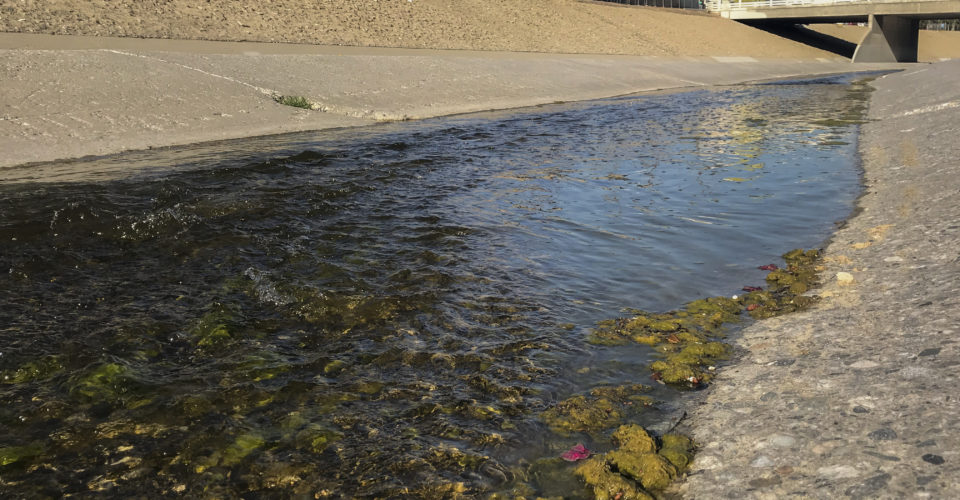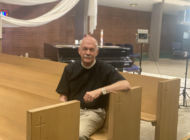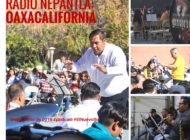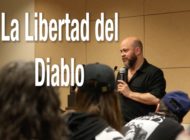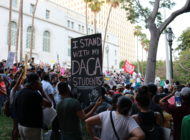“I’d like to say we’re trying to unpave the nation,” said L.A. County Department of Public Works Director Mark Pestrella.
By DALIA ESPINOSA
Photos by TOMÁS RODRÍGUEZ
EL NUEVO SOL
County officials and community stakeholders have met in previous months to discuss the improvement of stormwater infrastructure in Los Angeles and its surrounding cities.
The plan known as, the Safe, Clean Water (SCW) Program, proposes an opportunity to capture, clean and reuse more urban runoff. Funds for this program are designed to come from property tax. However, experts believe the program has potential to improve economic growth as well as environmental and public health benefits.
“We’re really missing a big opportunity at the moment because there’s so much of our region, streams and rivers [that] are designed really as flood control devices not as structures that help extract that rainwater,” said Vice Chair of the Department of Public Policy at UCLA Luskin School of Public Affairs, J.R. DeShazo.
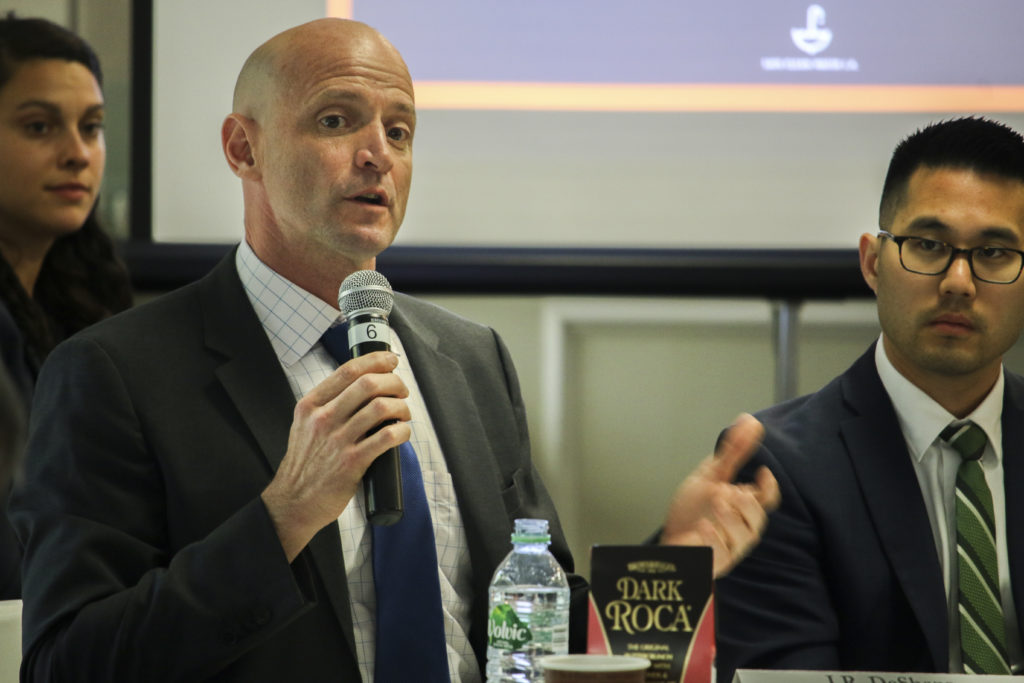
Vice Chair of the Department of Public Policy at UCLA Luskin School of Public, Affairs, J.R. DeShazo (left), speaks at a panel on Los Angeles County’s plans to preserve and harness storm runoff water. DeShazo also advises several Los Angeles agencies on environmental policies which includes water.
In 1938, LA suffered several deadly and damaging floods. A four-part series on KCET reported that 144 people died and years-worth of damages were left behind. As a response to the natural disasters, a flood control system was implemented, and with the help of the United States Army Corps of Engineers (USACE), the city soon began to pave riverbeds, dams, watersheds, and storm drains.
Now, the idea is to eliminate the vast amounts of concrete and replace them with green spaces which, in turn, would support underground systems that promise to filter and conserve stormwater for later use.
“I’d like to say we’re trying to unpave the nation,” said L.A. County Department of Public Works Director Mark Pestrella. “We’ve sort of paved over paradise here, and we’re trying to unpave with friends like our park folks, our school folks, [and] water agencies.”
Heavily cemented terrains restrict the natural absorption of water. So instead, water rolls past the concrete grounds and back into the rivers and ocean.
Currently, when stormwater falls onto city ground, it becomes contaminated by trash, chemicals, infection-causing bacteria and other toxins, explained Director of Health Equity, Prevention Institute Elva Yañez.
The SCW homepage reports that over 100 billion gallons of water go down the drain each year and about 4,000 tons of trash are collected from local beaches. In order to stop this cycle, city officials want to create permeable spaces in forms of parks and recreation.
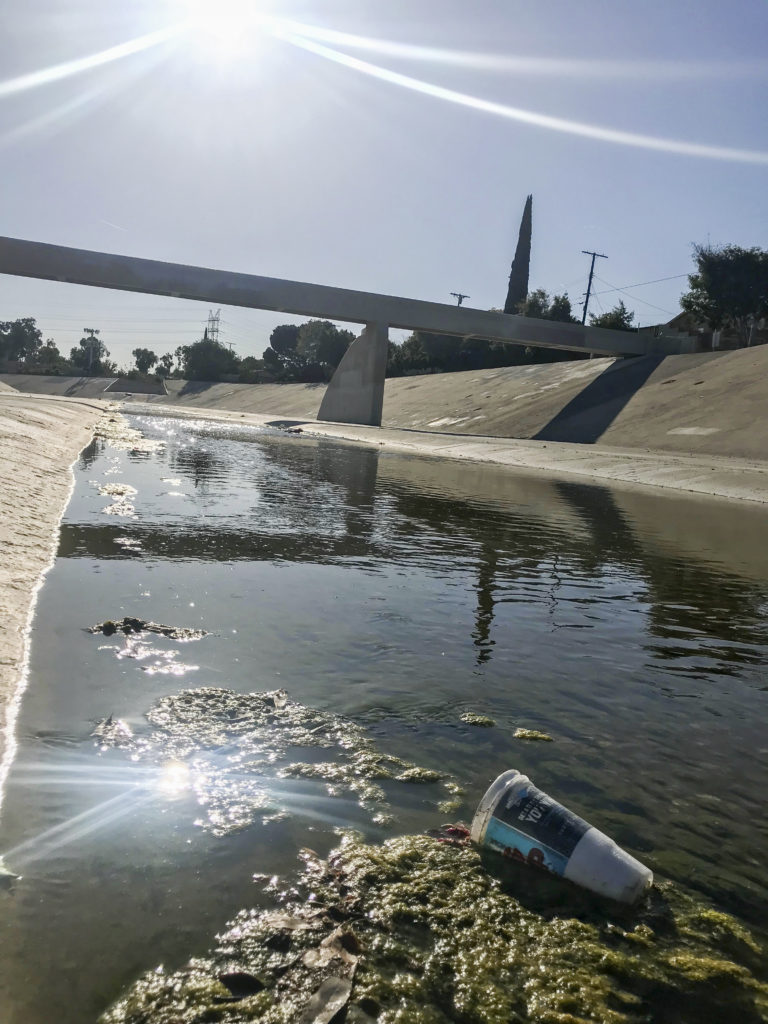
Trash, debris and a small stream of water runs through the L.A. River in Reseda in the San Fernando Valley. Rain water eventually makes its way to the ocean through the 40 plus mile course.
The county owns over 208 facilities where stormwater infrastructures such as infiltration basins and bioswales can be built, according to Deputy Director of the Planning and Development Agency for Los Angeles County Department of Parks and Recreation, Alina Bokde. This accounts for over 70,000 acres of land.
Franklin D. Roosevelt Park in Florence-Firestone has currently undergone changes which resemble the SCW agenda. Instead of having the rainwater flow onto the Compton Creek and LA River, the project aims to capture and reuse that same water through underground green infrastructure.
The underground systems are able to extract metals, bacteria and trash from the groundwater while providing recreational opportunities such as sports fields, exercising spaces and drought-tolerant landscaping on top, explained Bokde.
“In many of our projects when we’re building new parks, we require multiple funding sources to be able to provide the important recreation and open space amenities to the community,” said Bokde.
Proposition 1, Measure A, and the Urban Greening Grant are among the other funding options for projects such as SCW.
It’s important to add, according to Yañez, that many low-income communities are prone to flooding but lack economic resources to prepare or recover from the natural disasters. Still, she believes that these projects have the ability to open up financial opportunities for those who need them.
Job trainings in energy efficiency and solar installation were recently provided by the LA Alliance of New Economy [LAANE] and the LA Department of Water and Power [LADWP]. The people who underwent the trainings were successfully linked to permanent jobs, according to Executive Director of LAANE, Roxana Tynan.
“We’ve seen how that kind of pipeline works really well to get people into great jobs that need them, and also how we can adapt that to the potential for new jobs that would come out of building this infrastructure,” she added.
If plans move forward, Tynan concludes that over 7,000 construction jobs and 2,100 operations and management jobs can become permanent opportunities for people. She also ensured that communities most in need will get access to these jobs and the appropriate training.
“You’re creating jobs, you’re spending money, you’re helping grow the economy, and you’re leaving behind real benefits in communities that make [them] more livable and really support economic development,” said Tynan.
The program is still being presented to the public and has not sought approval from the LA County Board of Supervisors yet, explained Pestrella. As of now, there is an urgency for integrated collaboration between all 85 cities and over 200 water retailers.
Partnerships with businesses and schools are also important to the success of the project, explained LA County Supervisor Hilda Solis. It is imperative that people of all roles, like researchers and healthcare providers, come together to discuss the plans.
“It takes a whole lot of us to be able to make these kinds of things happen,” said Solis. “But it’s going to be all of us working together.”
For more information on the water conservation topic, visit safecleanwaterla.org or ourwaterla.org
Tags: Clean Water (SCW) Program Dalia Espinosa Hilda Solís J.R. DeShazo Mark Pestrella Roxana Tynan Safe stormwater management Tomás Rodríguez UCLA






